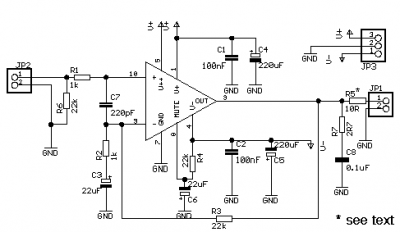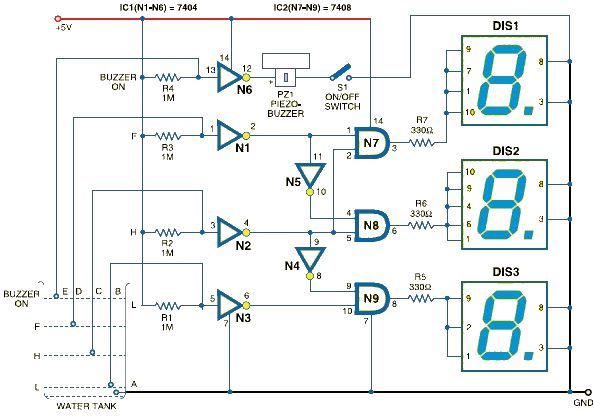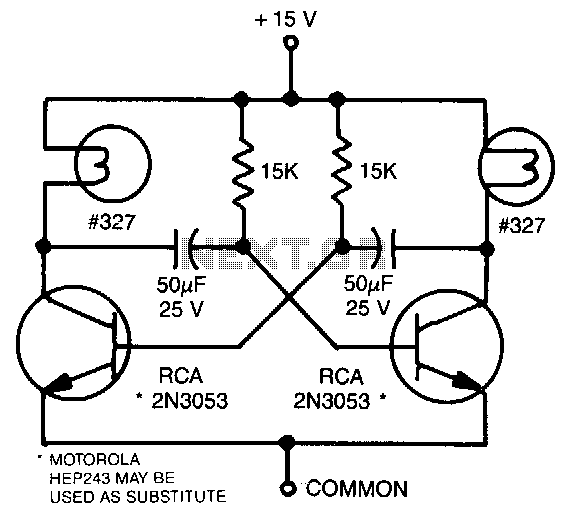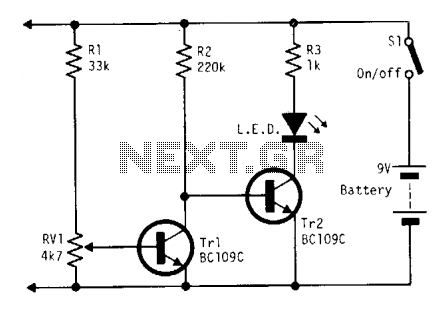
BF494 Transistor For UHF Indicator Wavemeter

The following circuit illustrates a UHF Indicator Wavemeter Circuit Diagram. This circuit utilizes dual BF494 transistors. Features: the oscillator is...
The UHF Indicator Wavemeter Circuit is designed to measure and indicate the frequency of ultra-high frequency (UHF) signals. The circuit primarily employs two BF494 transistors, which are known for their high-frequency performance and low noise characteristics, making them suitable for oscillator applications.
The core of the circuit consists of an oscillator that generates a frequency signal. The BF494 transistors are configured in a common emitter arrangement, which enhances the gain and allows for efficient oscillation. The oscillator's output is typically coupled to a frequency counter or a display circuit to provide a visual indication of the measured frequency.
The circuit may also include additional components such as resistors, capacitors, and inductors, which are essential for tuning the oscillator to the desired frequency range. The values of these passive components can be adjusted to optimize the performance of the circuit, ensuring accurate frequency measurement across the UHF spectrum.
In practical applications, the UHF Indicator Wavemeter can be used for testing and aligning UHF transmitters and receivers, as well as for educational purposes in electronics laboratories. Proper shielding and layout considerations should be taken into account to minimize interference and ensure reliable operation of the circuit. Overall, this circuit serves as a valuable tool for engineers and hobbyists working with UHF signals.The following circuit shows about UHF Indicator Wavemeter Circuit Diagram. This circuit using dual BF494 Transistor. Features: oscillator is .. 🔗 External reference
The UHF Indicator Wavemeter Circuit is designed to measure and indicate the frequency of ultra-high frequency (UHF) signals. The circuit primarily employs two BF494 transistors, which are known for their high-frequency performance and low noise characteristics, making them suitable for oscillator applications.
The core of the circuit consists of an oscillator that generates a frequency signal. The BF494 transistors are configured in a common emitter arrangement, which enhances the gain and allows for efficient oscillation. The oscillator's output is typically coupled to a frequency counter or a display circuit to provide a visual indication of the measured frequency.
The circuit may also include additional components such as resistors, capacitors, and inductors, which are essential for tuning the oscillator to the desired frequency range. The values of these passive components can be adjusted to optimize the performance of the circuit, ensuring accurate frequency measurement across the UHF spectrum.
In practical applications, the UHF Indicator Wavemeter can be used for testing and aligning UHF transmitters and receivers, as well as for educational purposes in electronics laboratories. Proper shielding and layout considerations should be taken into account to minimize interference and ensure reliable operation of the circuit. Overall, this circuit serves as a valuable tool for engineers and hobbyists working with UHF signals.The following circuit shows about UHF Indicator Wavemeter Circuit Diagram. This circuit using dual BF494 Transistor. Features: oscillator is .. 🔗 External reference





